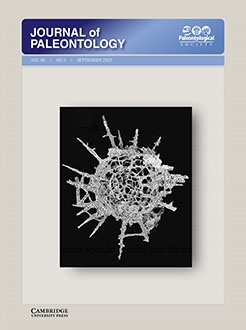The genus Amaltheus, one of the representative late Pliensbachian ammonoids, has biostratigraphic and paleobiogeographic significance in Japan. Four species, Amaltheus stokesi (Sowerby, 1818), A. margaritatus , A. repressus , and A. orientalis new species, have been found in the Kuruma Group in central Japan; A. stokesi and A. margaritatus are also from the Toyora Group in southwest Japan. On the basis of taxonomic analysis of the genus Amaltheus, we distinguish two successive ammonoid biozones in the lower part of the Teradani Formation of the Kuruma Group: the Amaltheus stokesi–Amaltheus repressus and the Amaltheus margaritatus assemblage zones, in stratigraphic ascending order. This study also establishes the presence of the Amaltheus stokesi Assemblage Zone in the Higashinagano Formation of the Toyora Group. The stokesi–repressus and the stokesi assemblage zones correspond biostratigraphically to the Amaltheus stokesi Standard Subzone of the margaritatus Zone. The margaritatus Assemblage Zone is correlated with the Amaltheus subnodosus and Amaltheus gibbosus standard subzones. The Japanese early–middle late Pliensbachian ammonoid faunas are composed almost entirely of pan-Boreal and Arctic species of the genus Amaltheus. This faunal composition has an affinity with that of the Northeast Russian region, and thus suggests a strong paleobiogeographic relationship between East Asian and Northeast Russian faunas throughout this time interval.
How to translate text using browser tools
16 August 2021
The late Pliensbachian (Early Jurassic) ammonoid Amaltheus in Japan: systematics and biostratigraphic and paleobiogeographic significance
Kentaro Nakada,
Michiharu Goto,
Christian Meister,
Atsushi Matsuoka
ACCESS THE FULL ARTICLE

Journal of Paleontology
Vol. 95 • No. 5
September 2021
Vol. 95 • No. 5
September 2021





